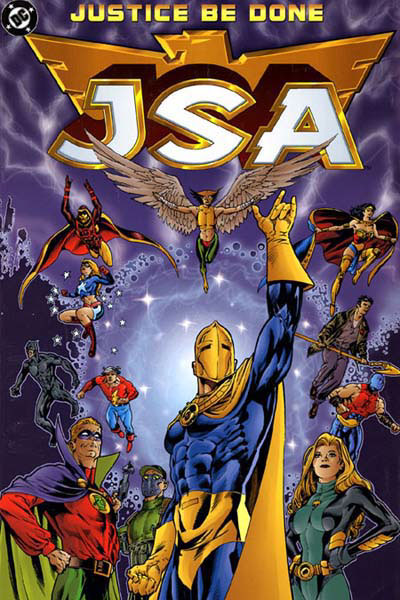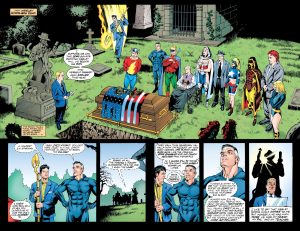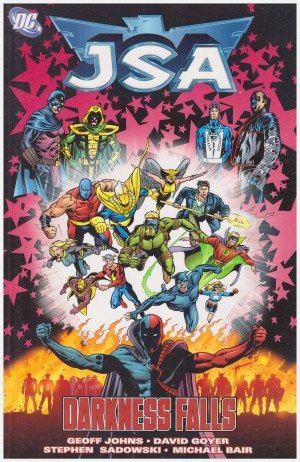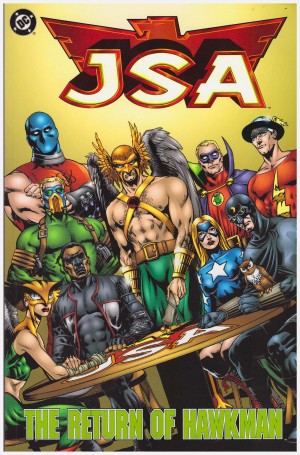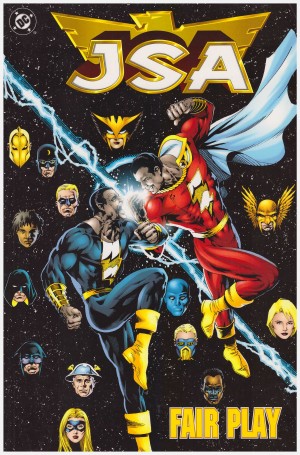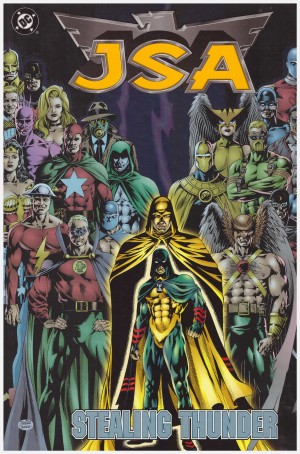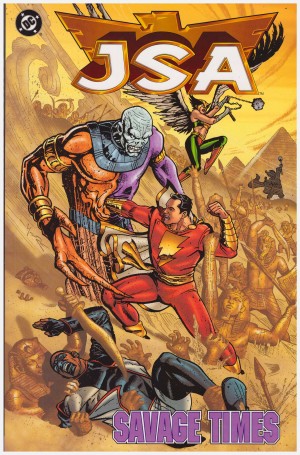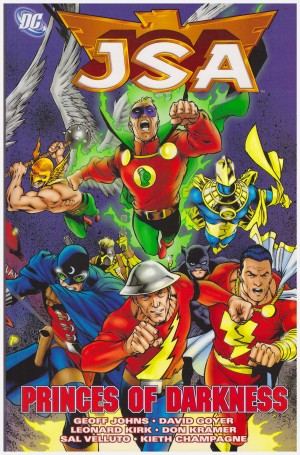Review by Frank Plowright
The heyday of the Justice Society of America was the 1940s, and after their 1960s re-introduction sales of Justice League of America spiked continually with their appearance, with annual team-ups extending well into the 1980s. Yet for all the residual goodwill the JSA resolutely resisted attempts to re-launch their own series, the most successful being just over a dozen issues in the mid-1970s, collected as The Justice Society of America. James Robinson and David Goyer wrote this opener to a new series that finally broke the hoodoo.
Previous incarnations had tried diluting the JSA with younger members, conceiving ever more credulity stretching reasons why heroes young in the 1940s could still fight crime fifty years later, or passing the legendary names to heroes updating the concept. Robinson had adopted the latter method to great acclaim in Starman, and the method selected to avoid the age problem was to ignore it, referring to “various circumstances” retarding the aging process.
The opening sequence is the death of the original Sandman. He has an awareness it’s imminent, and a seeming awareness it will lead to the rejuvenation of the Justice Society, which duly occurs at his funeral. The thread required to unite them is the passing of Doctor Fate’s mantle to a new host. It will be a child, but there are three possibilities, requiring the heroes to split into smaller teams to visit three locations. Robinson and Goyer are playing with the traditions of Justice League comics they read as children, and there are several other sly nods throughout, yet never enough to distract from the main narrative.
Scott Benefiel illustrates the prologue, and the remainder is the work of Stephen Sadowski, who was a real find at the time. While not always well-served by the inks of Michael Bair, he humanises the cast, who, let’s not forget, include some of the most powerful beings on the planet, and has obviously given some thought as to their posture and expressions. His full page illustrations are spectacular, and if there’s occasional stiffness to his figures, the remainder compensates.
By the end of the volume the writers have constructed a team from the ageless heroes, incorporated the legacy heroes they like, and disposed of those they don’t, but without trampling over previous material, no matter how mediocre. The plot here is bog standard, but the appeal is generated from the character interaction and the attention to detail.
Perhaps more than any other superhero group the JSA is swamped in history and continuity now dating back over 60 years. That can be off-putting, yet it’s adroitly side-stepped. Any new reader will pick up on the legacy as a background element, yet it never intrudes in head-scratching fashion. Those unfamiliar with the cast can purchase with confidence. While the series would improve, this is a more than adequate introduction. Those enjoying it might also want to seek out the patchier The Justice Society Returns as Robinson and Goyer set a World War II framework for others to play in. It’s combined with this material in the 2014 JSA Omnibus, while this content alone is combined with the next volume Darkness Falls as JSA by Geoff Johns Book One.
